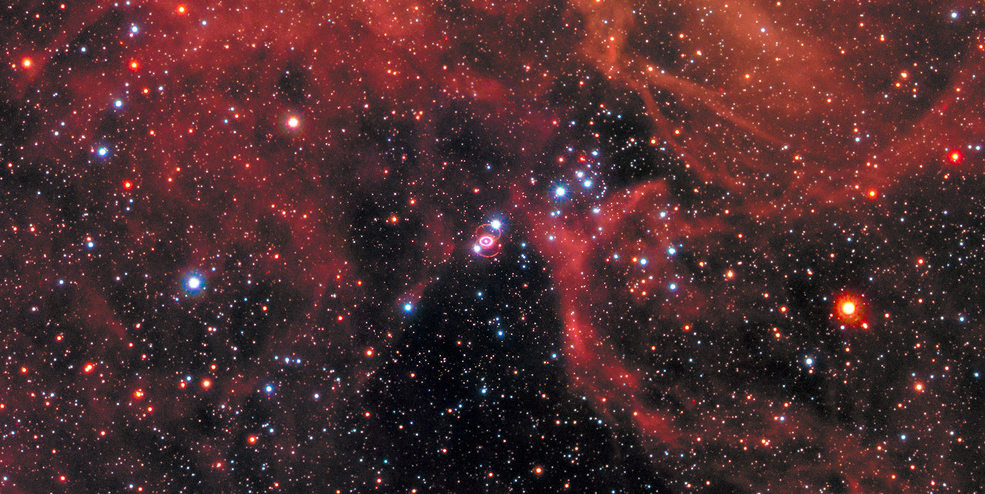Mystery Solved in Galaxy Far, Far Away?

Astronomers believe they’ve spotted evidence of a “missing neutron star,” which has evaded observation for more than 30 years.
A report in The Astrophysical Journal proposes that the neutron star, which should have been spotted in the wake of the supernova SN1987A, has been hidden by a super-dense cloud of gas and dust.
More observations are needed to confirm that the elusive neutron star is there.
For decades, a mystery has consumed the field of astronomy. On February 23, 1987, researchers witnessed the colossal explosion of a star, Sanduleak -69 202, approximately 163,000 light years from Earth in the Large Magellanic Cloud dwarf galaxy.
In the wake of supernova 1987A, as it was called, astronomers expected to find a neutron star. Instead, they found nothing but a dense cloud of gas and dust. Due to SN1987A’s mass—about 20 times that of our sun—scientists believed it would form a neutron star. Stumped scientists have been searching for that neutron star ever since and have come up blank—until now.
Data gathered in 2015 by the Atacama Large Millimeter/submillimeter Array (ALMA) in Chile revealed that there may be a bright, dense “city-sized” star within that cloud of dust after all, according to a paper published earlier this month in The Astrophysical Journal.
“We’re able to see that there’s this little bright region, this little patch of dust, that is consistent with being at a hotter temperature than the stuff around it,” lead author and astronomer Phil Cignan, of Cardiff University in the U.K., told Scientific American. “And that happened to line up exactly with where we thought the neutron star should be.”
SN 1987A has provided a unique opportunity for astronomers to closely witness the impressive transition through a star’s life stages—the end of its life, its death and, now, hopefully, its dramatic rebirth as a neutron star. Astronomers were keeping close tabs on the nearby star before it collapsed under its own weight and went full supernova. After no neutron star was spotted, they wondered if the supernova had instead formed a black hole.
More observations are needed to understand exactly what’s happening within that cloud of dust. What's strange: That warm patch of dust is curiously off-center, reports SyFy Wire, meaning there may be forces propelling the compact star from one side.
Thankfully, astronomers using the Hubble Space Telescope will get a chance to hunt for the star later next year.
Source: Scientific American
You Might Also Like

